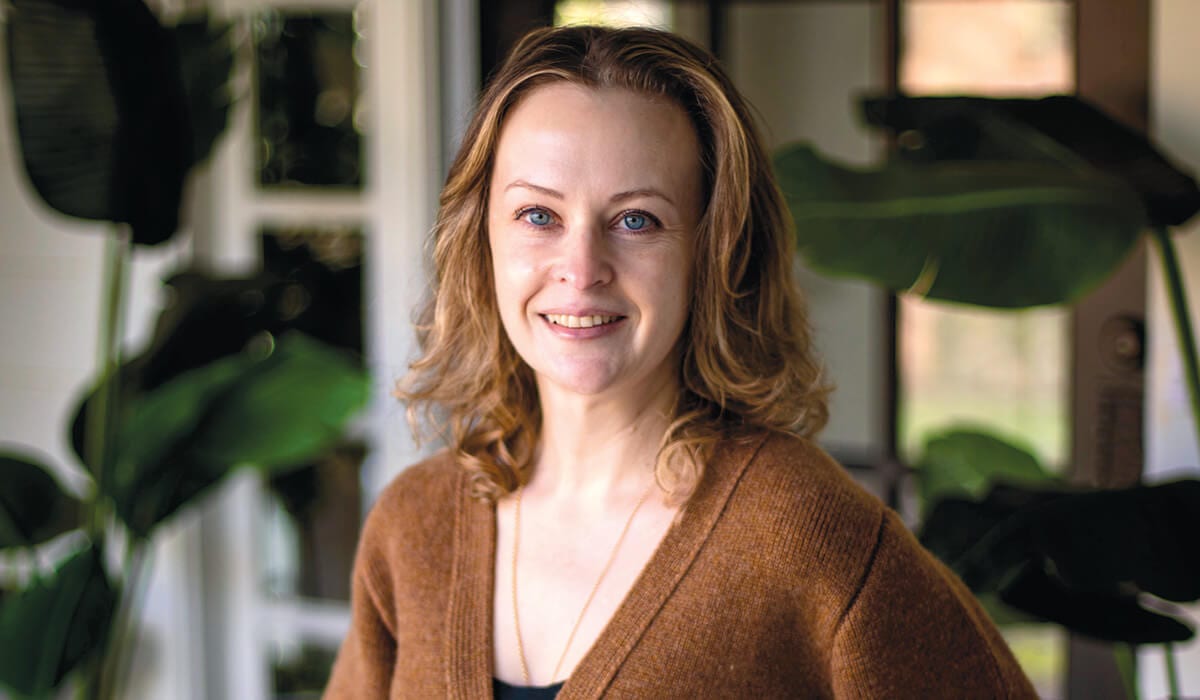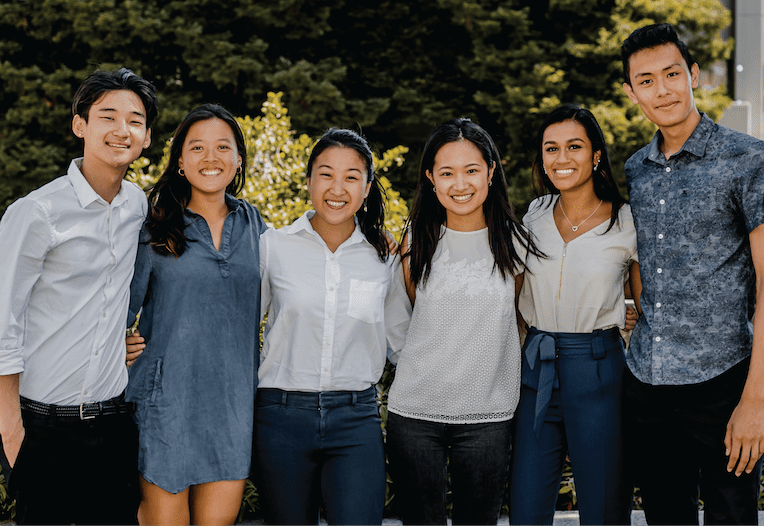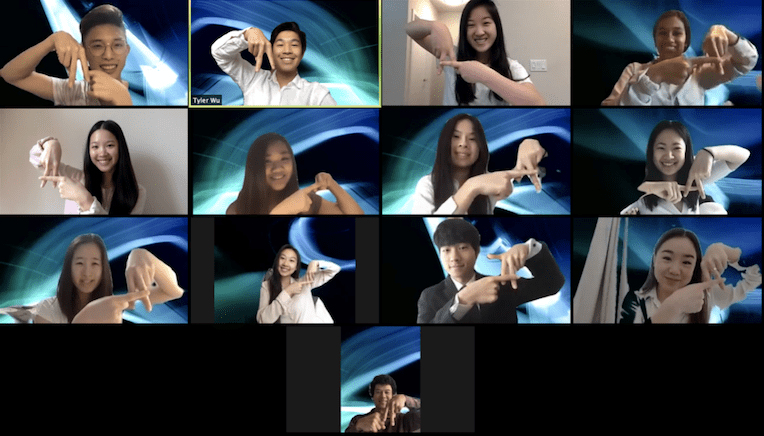Topic: Marketing
Emily Powell, BCEMBA 08
President & Owner, Powell’s Books

As the president of world-famous Powell’s Books in Portland, Ore., Emily Powell is well-versed in the nuances of globalization. “We don’t have aims to be in any other city, yet we’re very successful,” she says. “Going deep and knowing your community can allow you to be even more successful than a business with aspirations to go wide.”
Powell’s grandfather started the business as a used bookstore in 1971, and over the years, the store has grown to offer new books, encompass a city block, and, in 1994—pre-Amazon.com—sell books online.
While bookselling is still about connecting readers and books, Powell has had to confront contemporary challenges: the ascent of Amazon, e-books, and, most recently, a pandemic. Through it all, Powell has made serving Oregon’s readers and writers her top priority while also deftly delivering books to readers nationwide and beyond.
The secret sauce, Powell says, lies in used books: intricately tracking their performance—how quickly they sold, at what price, and in what condition—to aid future merchandise choices and shelving them with new books, which many bookstores don’t do. “By far we sell more of both new and used as a result,” she says.
Equally important is maintaining a presence for Powell’s pilgrims. She remembers one Florida woman who burst into tears upon entering the store and realizing a life dream. “Our loyal customers outside of Portland have all had some physical contact with the store,” she says. “They’ve all either been there or had someone tell them about it. It’s the weight of a physical experience that’s allowed us to become who we are.”
Berkeley’s longtime ‘hippie bread’ bakery is in peril of closing
The allure of mysteries
Does advertising actually work: Part 2, digital
Blurring the lines between physical and digital spaces
How to be Successful on Instagram, TikTok, & Co.
Navigating the new era of influencer marketing
Curiosity and hunger are driven by the same brain regions
Ridepanda wants to help you pick the exact right e-bike
Haas to be Business: Best practices in Zoom networking
Why do politicians need to say ‘I approve this message’ in their ads?
Recalling memories from a distance changes how your brain works and helps you excel in your career
The future of branding: From slogans to stories-David Aaker
Why subcategories are the only way to grow
Print it: Readers buck e-readers for service, quality at Sacramento bookstores
Haas team wins regional National Student Advertising Competition

A plan to help marketers design and place creative, data-driven ads that could deliver a high return on investment (ROI) landed an undergraduate team a first place district win at the National Student Advertising Competition (NSAC).
The competition, which was supposed to be held at San Jose State University, took place via Zoom on April 24-25. It’s the team’s first major win since 2016.
Team members: The 29-member team, called imagiCal, included UC Berkeley undergraduate students from multiple disciplines, including business, economics, computer science, sociology, and architecture. This year’s team was led by imagiCal’s President, Maya Iyer, BS 21 (economics). Presenters included: Shelley Cai, BA 21 (sociology); Cicily Deng, BS 22; Nikhil George, CS 22 (computer science); and Brendan Shih, BS 23.

The field: About 2,000 undergraduate students from 200 schools around the country competed in district-level competitions before advancing to the final round. Haas competed against teams from San Jose State University, University of Nevada, University of Nevada-Las Vegas, and University of San Francisco.
The challenge: The team was tasked with developing a business and marketing strategy to promote the Adobe Experience Cloud–a digital platform to manage online marketing–among advertising media buyers.
The plan: The team’s campaign slogan was “Data-backed, Story-driven,” showcasing the ways that marketers could create a curated ad experience using data-informed messaging.
Secret sauce: “Our secret sauce lies in our diversity,” said Tyler Wu, BS 22. “We pride ourselves on having a diverse community of students, which allows us to consider multiple points of view, learn from each others’ strengths and weaknesses, and think creatively.
Wu also credited the team’s success to student designers who were able to see the practicality of certain ad executions and data scientists who crunched the numbers to see the potential impact of these executions.
The Haas factor: “Our Haas faculty advisor, Judy Hopelain, was very helpful in guiding us through this difficult case,” said Wu. “With her expertise in business-to-business (B2B) marketing, we were able to gain a stronger understanding of how to market B2B products and approach our campaign strategy.”
Diane Rames, a NSAC advisor, also helped the imagiCal team with their B2B marketing and guided them through the competition.
NSAC is a college advertising competition with 16 districts and over 150 teams nationwide. Each year, students are challenged to create a multi-million dollar advertising campaign for a corporate sponsor.
David Aaker: Father of modern branding
A simple trick for seeing the world through fresh eyes

The commute from downtown San Francisco, where Assoc. Prof. Clayton Critcher lives, to his office at Haas is roughly 12 miles. Not ideal, he knows, but when he made the move he tried to look on the bright side. “I figured I’d get to drive across the Bay Bridge every morning, see the scenery, and maybe this would add to my quality of life,” he says. “Unfortunately, I appreciated what I saw for about three days and then started growing blind to it.”
Psychologists refer to this phenomenon as habituation. Novelty wears off; what is fresh grows stale; beauty no longer captivates. As he personally experienced this universal human tendency many days of the week, Critcher began to wonder if there might be a way to slow the process down. How can we stir up our waning sense of wonder? With Minah Jung and Fausto Gonzalez from New York University, Critcher found that a relatively small intervention can, in fact, go a long way toward this end. (Their results were published this month in the Journal of Personality and Social Psychology.)
Their finding is rooted in a mechanism that Critcher and his colleagues call the “vicarious construal effect.” In short, by imagining an experience through somebody else’s eyes, people are themselves able to capture an appreciation that they had either lost or never possessed in the first place.
By imagining an experience through somebody else’s eyes, people are themselves able to capture an appreciation that they had either lost or never possessed in the first place.
Experimental interventions
The researchers ran more than a dozen experiments in which participants were asked to watch the same short video clip three times in a row. (These clips varied in the responses they evoked, from laughter to disgust.) Predictably, when participants were asked to rate how funny or sad or uplifting they found a particular clip on a scale from 1 to 100, ratings dropped with each successive viewing. However, by asking one group of participants to consider what somebody seeing the clip for the first time might see—by pushing people to step outside of their own experience—the researchers were able to significantly reduce the rate at which people grew habituated to the clip. That is, their ratings of their own experience dropped 60% to 70% less between the second and third viewings.
The vicarious construal effect also proved influential outside of this strict framework. In one study, for instance, participants watched short clips of Japanese anime. A subset of those who had no particular interest in the form was told to look for what an anime fan might enjoy about the clip. Through this lens, the participants themselves expressed a greater personal appreciation for what they saw. This result held even in an experiment that had people who could not speak Spanish watch a Spanish-dubbed clip of Friends. Those who were prompted to consider what a Spanish-speaking fan might enjoy in the clip liked it more themselves.
“This was a case where it seemed like the intervention would in no way be useful: These people couldn’t even speak Spanish,” Critcher says. “And yet, without understanding the dialog, they still enjoyed it more.”
This finding about a Spanish-dubbed Friends raises a key question that Critcher is now exploring: How far can vicarious construal effects reach? The degree to which somebody likes anime, or Jerry Seinfeld, or polar bears—three examples of video clips that participants watched — is a politically and morally neutral issue. Opinions on these topics aren’t classified as “wrong” or “bad.” This changes when it comes to politically charged subjects: Might a political progressive overcome some of their own biases against a conservative viewpoint if asked to consider it from the perspective of a supporter? This question becomes all the more important given the recent proliferation of fake news, in which liberals and conservatives alike are often duped into believing fictitious news stories that spread falsehoods sympathetic to their own side. Might encouraging people to consider the media through their political opponents’ eyes—the vicarious construal effect—help to eliminate political partisans’ biased tendencies?
Rediscovering joy
Whether or not this turns out to be the case, Critcher offered one important consideration in the application of the results. In all of the cases he studied, researchers told participants to adopt somebody else’s perspective, but the participants didn’t know why they were being asked to do this. It is possible that this ignorance is essential to the result. Critcher may not be able to rediscover the joy of his commute by simply asking himself what a tourist driving over the Bay Bridge would appreciate. His awareness of the deception could blunt its power.
Simply trying to think about what someone else might see actually changes the way we see and interpret what we’re doing, changes the emotions we feel.
These larger questions aside, though, Critcher reiterated the scientific legitimacy this work lends to the old adage encouraging us to walk a mile in somebody else’s shoes. “Simply trying to think about what someone else might see actually changes the way we see and interpret what we’re doing, changes the emotions we feel,” he says. “It can help people to rediscover what they once saw in experiences they’ve had many times, or even help people to enjoy an experience that they weren’t initially predisposed to like.”